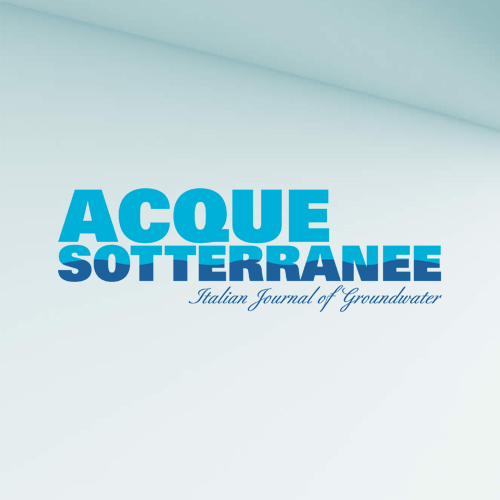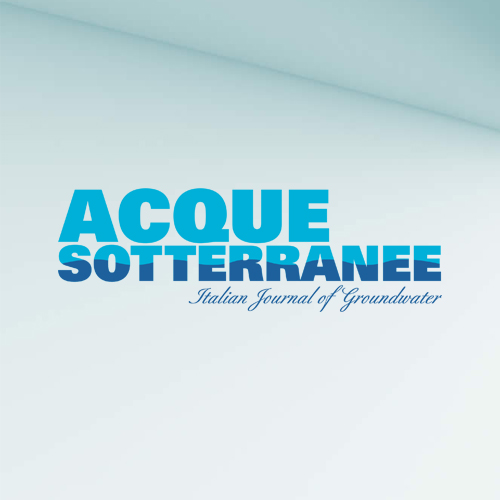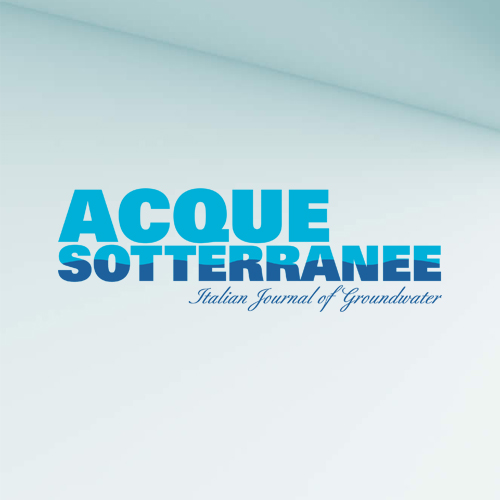Spatio-temporal variability of groundwater hydrochemical features in different hydrogeological settings in Piedmont and Campania regions (Italy), a comparative study
Accepted: 19 March 2024
SUPPLEMENTARY MATERIALS: 106
All claims expressed in this article are solely those of the authors and do not necessarily represent those of their affiliated organizations, or those of the publisher, the editors and the reviewers. Any product that may be evaluated in this article or claim that may be made by its manufacturer is not guaranteed or endorsed by the publisher.
Authors
The spatio-temporal evolution of groundwater chemistry has seen an increase in interest over the last decade at a global level. Identifying and discerning the sources of the natural and anthropogenic compounds and the actual hydrochemical processes, as well as their evolution, is essential to support a sustainable planning for managing and protecting groundwater resources at the present time and in the future. The main objective of this study is the comparison of two study areas in Italy (Piedmont and Campania Regions), different in their geographical and geological contexts and climate conditions, to highlight the similarities and differences in the hydrogeochemical behavior in space and time. Three main ions were considered (NO3 –, SO4 2–, Na+) and analyzed to identify the sources and hydrochemical processes responsible for their spatial distribution in the 2015-2020 period and evaluate the existence and the potential causes of trends in their concentration for the 2000-2020 period. Results highlight specific factors and processes distinguishing the spatial distribution and temporal variability of ion concentrations in Piedmont and Campania study areas. These processes are mainly related to the geological and geographical features of the study areas. In both areas, a significant influence of anthropogenic pressures emerges for both spatial and temporal evolutions, with remarkably increasing trends in NO3 – concentrations. In conclusion, some factors and processes emerge as site-specific, mainly related to the geological aspects and natural hydrochemical processes, whereas others are in common (i.e., anthropogenic impacts); thus, reinforcing the advantage of making comparative studies.
How to Cite

This work is licensed under a Creative Commons Attribution-NonCommercial 4.0 International License.
PAGEPress has chosen to apply the Creative Commons Attribution NonCommercial 4.0 International License (CC BY-NC 4.0) to all manuscripts to be published.
Similar Articles
- Giuseppe Sappa, Francesco Maria De Filippi, Flavia Ferranti, Silvia Iacurto, Environmental issues and anthropic pressures in coastal aquifers: a case study in Southern Latium Region , Acque Sotterranee - Italian Journal of Groundwater: Vol. 8 No. 1 (2019)
- Mara Dal Santo, Giuseppe Alberto Prosperi, Opportunities and critical issues related to the use of amendments as sustainable remediation techniques , Acque Sotterranee - Italian Journal of Groundwater: Vol. 11 No. 1 (2022)
- Lucio Martarelli, Rossella Maria Gafà, Francesco La Vigna, Gennaro Maria Monti, Angelantonio Silvi, New hydrogeological results on the Groundwater Dependent Ecosystem of the Pilato Lake (Sibillini Mts, Central Italy) , Acque Sotterranee - Italian Journal of Groundwater: Vol. 11 No. 1 (2022)
- Mara Dal Santo, Giuseppe Alberto Prosperi, Application of chemical reagents as innovative remediation technologies for groundwater impacted by petroleum hydrocarbons in Italy , Acque Sotterranee - Italian Journal of Groundwater: Vol. 9 No. 1 (2020)
- Letizia Fumagalli, Gennaro Alberto Stefania, Chiara Zanotti, Davide Sartirana, Giuseppe Raffaello Di Martino, Antonella Perosa, Piergiorgio Valentini, Marco Rotiroti, Tullia Bonomi, Multivariate statistical analysis and numerical modelling for the hydrogeological and hydrochemical characterization of a closed MSW landfill: the case study of Vizzolo-Predabissi , Acque Sotterranee - Italian Journal of Groundwater: Vol. 9 No. 1 (2020)
- Ifeanyi Emmanuel Anyanwu, Sodiq Solagbade Oguntade, Groundwater exploitation in Awka (Anambra – Nigeria) and environs: Prospects, and challenges while drilling and its mitigation measures , Acque Sotterranee - Italian Journal of Groundwater: Vol. 10 No. 4 (2021)
- Adele Clausi, Roberto Mazza, Francesco La Vigna, Isidoro Bonfà, Hydrogeological setting of a Rome city sector: shallow groundwater in the right side of Tiber River inside the G.R.A highway , Acque Sotterranee - Italian Journal of Groundwater: Vol. 8 No. 4 (2019)
- Barbara Dessì, Rossella Maria Gafà, Lucio Martarelli, Gennaro Maria Monti, Angelantonio Silvi, Hydrogeological features of the Italian sources included within the European thermal-mineral water inventory developed after the H2020 GeoERA Hover project , Acque Sotterranee - Italian Journal of Groundwater: Vol. 13 No. 2 (2024)
- Francesca Lotti, Workshop: The Role of Groundwater Numerical Models in Decision Making (discussion between the model creator and the final user...) , Acque Sotterranee - Italian Journal of Groundwater: Vol. 7 No. 1 (2018)
- Giovanni Pranzini, Francesco Di Martino, Ester Della Santa, Katia Fontanelli, Gianni Fucci, Impact of climate change on the water balance of the Apuo-Versilia plain acquifer (Tuscany, Italy) , Acque Sotterranee - Italian Journal of Groundwater: Vol. 9 No. 3 (2020)
<< < 15 16 17 18 19 20 21 22 23 24 > >>
You may also start an advanced similarity search for this article.


 https://doi.org/10.7343/as-2024-748
https://doi.org/10.7343/as-2024-748










